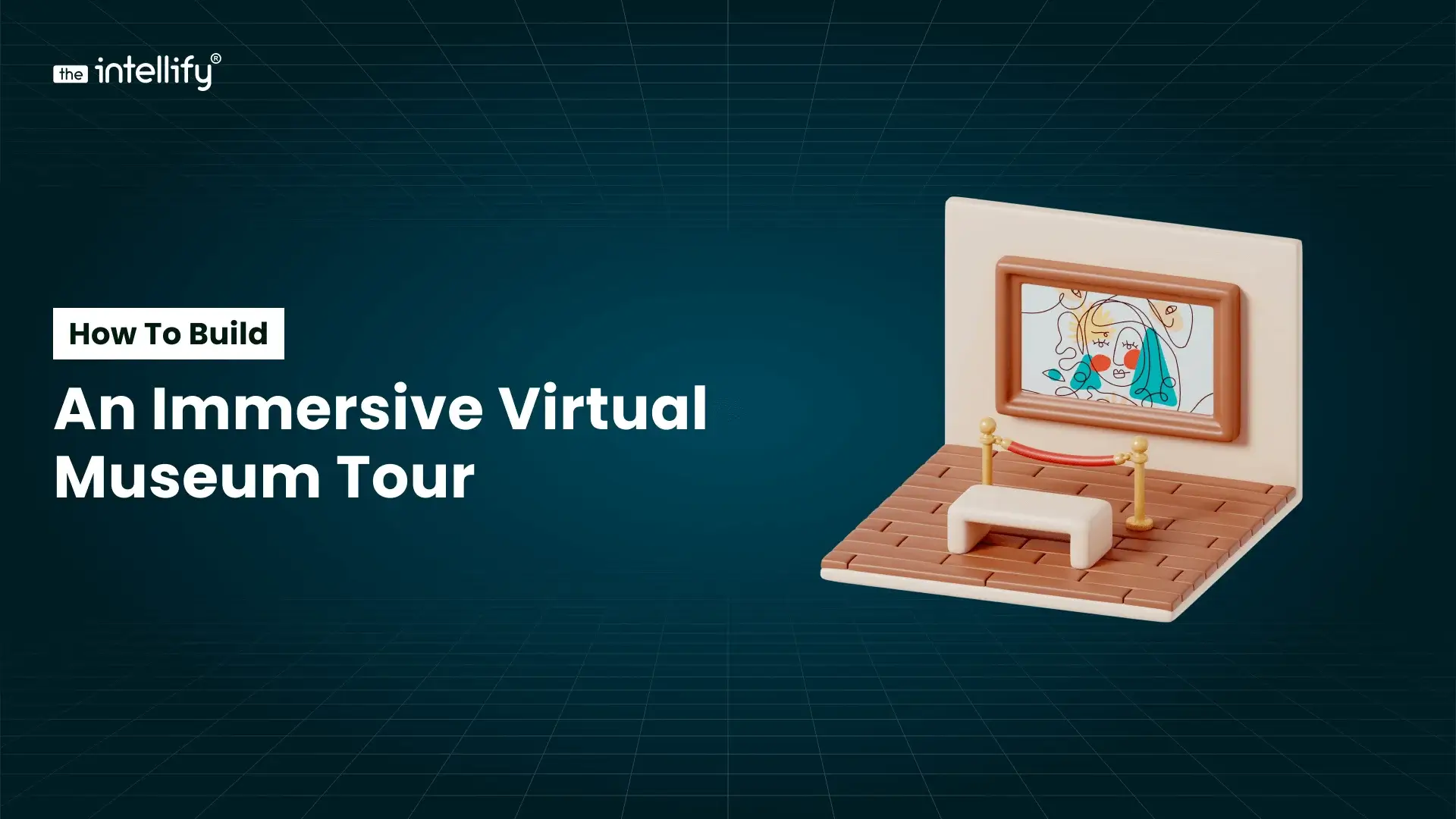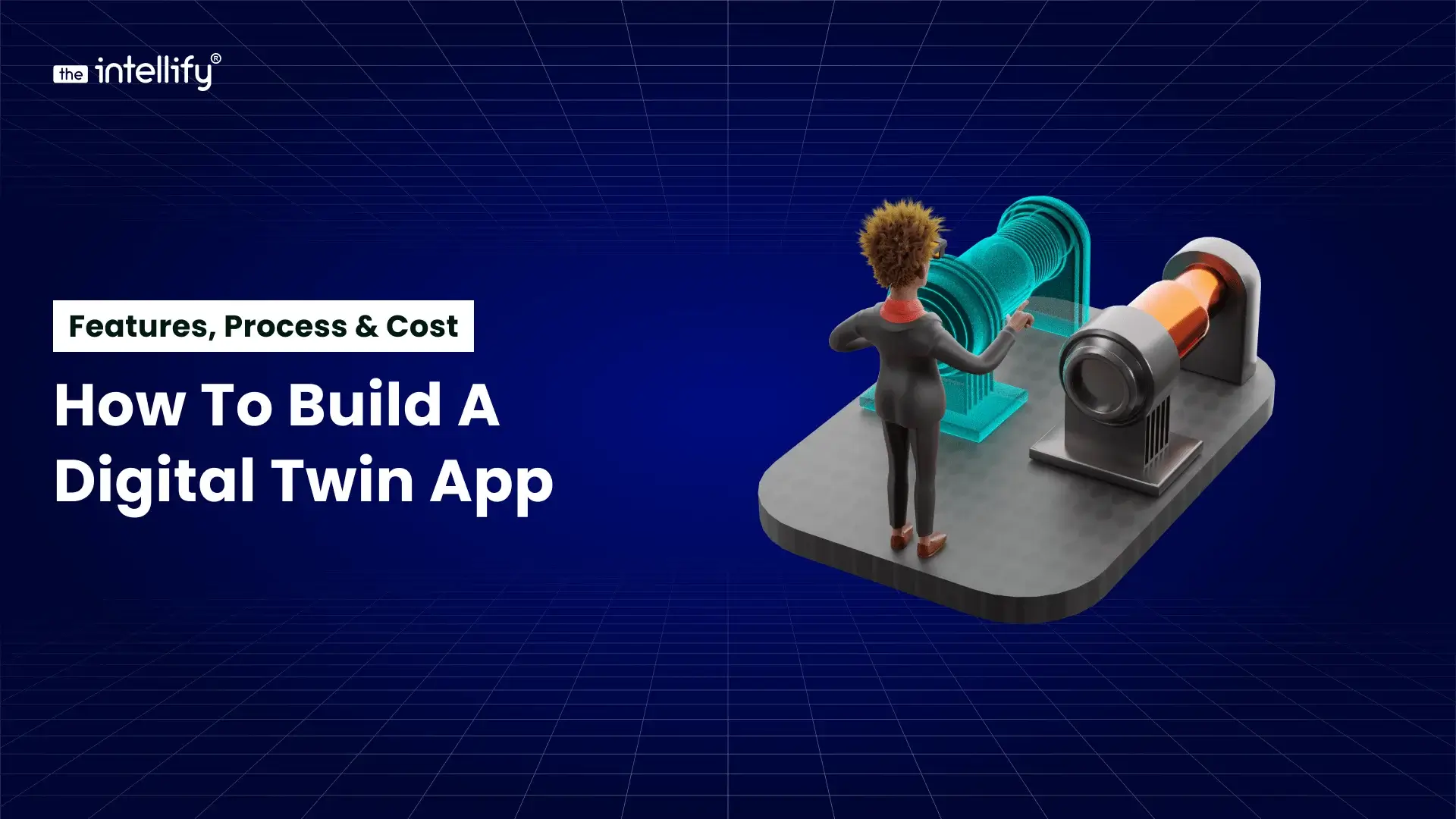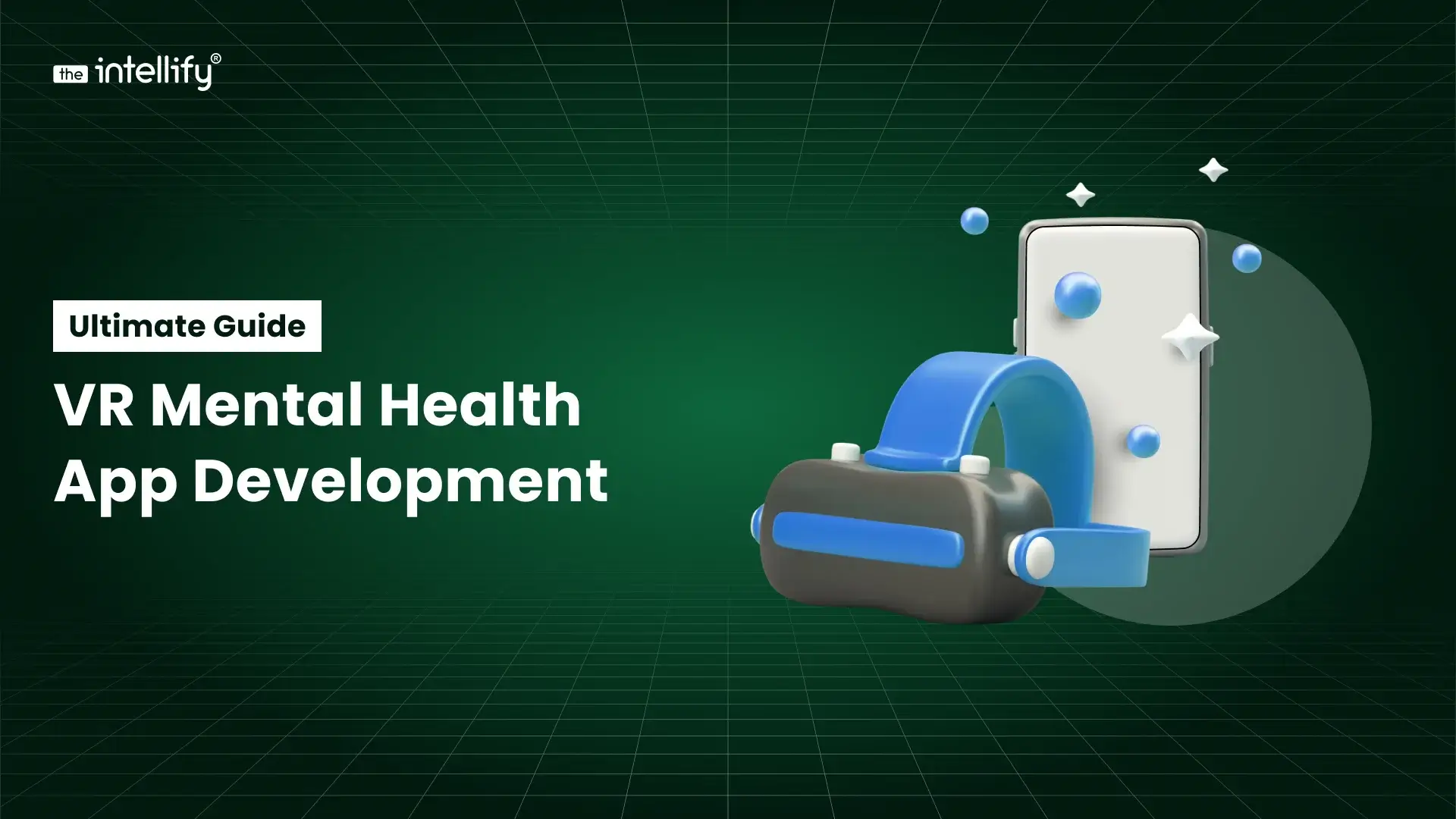AR/VR in Real Estate: Boosting Property Sales Across the Middle East

By Jalaj Shah
September 30, 2025

Quick Executive Summary
AR and VR are transforming real estate sales across the Middle East by enabling immersive virtual property tours, AR-based staging and customisation, and large-scale digital twins for master-planned communities. These technologies shorten sales cycles, increase engagement, and expand reach to international buyers while lowering marketing and staging costs. Leading regional developers, government initiatives, and specialist vendors (including The Intellify) are deploying WebAR, VR walkthroughs, and digital-twin platforms to convert off-plan inventory faster and more transparently. For developers, brokers, and investors, a focused pilot, clear KPIs, and CRM integration are the most effective routes to achieving a measurable ROI.
Why AR/VR Matters for Middle East Real Estate
Market context and digital readiness
The Middle East’s real estate sector is characterised by a high proportion of international buyers, large off-plan inventories, and rapid urban development. Governments and private stakeholders are investing in smart-city initiatives and digital infrastructure, which creates an ideal environment for AR/VR adoption. For agents and developers targeting cross-border investors, immersive experiences remove the friction of distance and time zones.
Buyer behaviour and expectations
Modern buyers, especially HNWIs, expatriates, and institutional investors, expect rich digital experiences before making high-value decisions. Virtual walkthroughs and interactive AR tools provide realism and context, reducing uncertainty and enabling confident commitments without the need for immediate travel.
Strategic advantages over traditional marketing
AR/VR compresses sales cycles, eliminates repeated physical showings, reduces staging costs via virtual staging, and enhances conversion rates by allowing buyers to form an emotional connection to a property earlier in the funnel.
Core Use Cases (Residential & Commercial)
Virtual property tours (VR walkthroughs)
VR walkthroughs let prospects “step inside” apartments, villas, or offices through immersive 360° environments. They are powerful for off-plan sales where the buyer needs to visualise scale, light, and flow. For commercial leasing, VR enables tenant stakeholders to test workflows and circulation before committing.
Augmented reality for staging & customisation
AR apps overlay furniture, finishes, and material options in real time on mobile devices. For residential listings, AR staging allows buyers to personalise layouts and finishes. For corporate tenants, AR can illustrate furniture placement, workstation density, and branding integration.
Digital twins and master-plan visualisation
Digital twins are high-fidelity 3D replicas of developments or neighbourhoods that incorporate spatial geometry and metadata. They’re invaluable for master-plan sales, investment briefings, and integrated marketing where buyers or investors need a macro-to-micro view of the project.
Interactive sales platforms and configurators
Web-based 3D configurators combine VR and AR elements with pricing and mortgage calculators, enabling buyers to configure units, choose add-ons, and immediately see pricing and payment scenarios all within a single digital environment.
Virtual showrooms and remote client collaboration
Developers can host virtual showrooms instead of or in addition to physical showrooms, opening access to a global buyer base. Live guided VR sessions allow brokers to walk prospects through the property and answer questions in real time.
Leading Technology & Tools
Types of solutions
- Immersive VR platforms: Full 360° or photorealistic 3D walkthroughs delivered through headsets or browsers.
- Mobile AR apps & WebAR: Lightweight AR experiences accessible through smartphones without app installation.
- 3D scanning & photogrammetry: Capture existing spaces accurately to create realistic virtual environments.
- Cloud-based digital twin engines: Host and update large-scale 3D models for master planning and analytics integration.
- Analytics & CRM integrations: Track engagement, heatmaps, and conversion events to feed into sales pipelines.
Delivery channels
- Standalone VR headsets for private sales presentations and high-touch investor demos.
- Web-based viewers that support 3D and 360° experiences directly in browsers for mass distribution.
- Mobile AR for in-situ visualisation and on-site enhancement of partially finished or furnished spaces.
Real-World Case Studies (Middle East focus)
The examples below illustrate practical, commercially-proven uses of AR/VR across the Gulf region and adjacent markets.
The Intellify Custom AR/VR solutions for property sellers
The Intellify provides tailored AR/VR development services and WebAR experiences to real estate clients, enabling custom virtual tours, interactive configurators, and AR staging. Their approach emphasises integration with CRM systems and analytics so developers can immediately act on qualified leads generated by immersive experiences.
Digital-twin-driven sales for master-planned communities
Several Gulf developers are deploying digital-twin platforms to let buyers explore communities at scale. These platforms allow buyers to examine infrastructure, plot placement, and amenity proximity, turning abstract masterplans into accessible, immersive narratives that support off-plan sales.
VR showrooms for luxury off-plan inventory
High-end developers have replaced static model apartments with VR showrooms to present multiple finish options and layouts without constructing costly physical mockups. This reduces the time to market for new layouts and enables global buyers to compare units in a single session.
Government-led initiatives and standardisation
Some regional land authorities and real estate regulators encourage digital adoption to standardise off-plan transactions and improve transparency. Public-private collaborations often accelerate adoption by providing shared platforms and industry standards.
Business Benefits & Commercial Outcomes
Faster sales cycles and higher conversion
Immersive experiences shorten the time between first contact and purchase by allowing buyers to self-qualify faster, eliminating many early-stage site visits and enabling decisions to be made remotely.
Lower marketing and staging costs
Virtual staging and reusable VR models reduce the need for multiple physical show units, repeated photoshoots, and large staging budgets.
Expanded geographic reach
AR/VR opens markets beyond local geography. Developers and brokers can sell to international investors without requiring them to travel, widening the buyer pool.
Better-informed buyers result in fewer revisions and complaints
When buyers experience accurate virtual simulations of finishes and layouts, expectations align more closely with the delivered product, which reduces the frequency of post-sale change requests and customer dissatisfaction.
Data-driven sales and targeted remarketing
Behavioural analytics from VR/AR interactions (which rooms users visited most, how long they stayed, what finishes they interacted with) enable highly targeted follow-ups and personalised offers.
Implementation: Step-by-Step Roadmap
For developers & project owners
- Define goals and KPIs: Sales velocity, lead quality, reductions in physical showings, or conversion uplift.
- Prioritise use cases: Off-plan demonstration, model unit replacement, or tenant fit-out simulation.
- Select the right tech stack: Decide whether WebAR, mobile AR, or headset VR best serves target buyers.
- Build or commission content: 3D modelling, photogrammetry, and UX design. Work with specialists experienced in real estate workflows.
- Integrate analytics and CRM: Ensure VR/AR leads feed into existing sales pipelines.
- Pilot & iterate: Launch a pilot with a flagship project, measure KPIs, then scale across portfolios.
For brokers & agencies
- Adopt AR/VR-enabled listings: Add virtual tours to high-value properties.
- Train sales teams: Teach agents to run live VR walkthroughs and interpret engagement analytics.
- Promote remote viewings: Make virtual tours the default first touch for international leads.
- Bundle digital services: Offer buyers virtual customisation sessions and AR staging to accelerate decisions.
For investors & asset managers
- Request demo metrics: Ask providers for engagement and conversion statistics.
- Demand integration: Ensure platforms provide secure, auditable data and integrate with financial modelling tools.
- Pilot due diligence: Use digital twins to assess asset performance characteristics and neighbourhood dynamics.
Measuring ROI: What to Track
Essential KPIs
- Lead quality uplift: Percentage of VR/AR leads that progress to site visits or offers.
- Time-to-contract: Reduction in average days from first contact to signed agreement.
- Cost-per-lead: Compare VR/AR-enabled campaigns with conventional channels.
- Engagement metrics: Session duration, interaction rates, and heatmaps inside VR tours.
- Conversion uplift: Sales conversions from properties with immersive content vs. without.
Benchmarks and expectations
Expect initial setup costs for content creation, but anticipate faster break-even on high-ticket units due to higher conversion rates and lower physical demo costs. Track results over rolling quarters and iterate on creatives and UX based on behavioural data.
Challenges & How to Mitigate Them
Challenge: Quality of 3D assets
Mitigation: Use professional 3D modelling and validate assets with architects and QA testers. Prioritise photorealism where purchase decisions depend on perceived finish quality.
Challenge: Buyer accessibility & friction
Mitigation: Offer multiple delivery channels (WebAR for instant access, downloadable VR apps for premium demos). Provide guided sessions for less tech-savvy buyers.
Challenge: Integration with sales systems
Mitigation: Choose vendors that provide APIs and direct CRM integrations so that interaction data becomes actionable.
Challenge: Cost & scaling
Mitigation: Start with high-value projects and repeatable templates. Virtual staging and parameterised models reduce long-term cost per asset.
Challenge: Legal and compliance considerations
Mitigation: Ensure representations are accurate and disclaimers are clear for off-plan visualisations. Coordinate with legal teams to align marketing content with regulatory requirements.
Procurement: Choosing the Right AR/VR Partner
Evaluation criteria
- Domain experience: Look for proven real estate projects in the Middle East.
- Integration capabilities: CRM, analytics, and ERP system integration.
- Scalability: Ability to support portfolios and digital twins.
- UX and conversion focus: Vendors should design for sales outcomes, not only visuals.
- Post-launch support: Content updates, training, and analytics support.
Working with specialist firms
Specialist development firms offer custom experiences, white-label platforms, and WebAR solutions that can be tailored to developer brands. When engaging a vendor, require clear deliverables (file types, hosting, analytics) and a staged delivery timeline.
Future Outlook: Where AR/VR is Headed in the Region
- Wider adoption of WebAR: Instant, no-download AR will become the default for mobile-first buyers.
- Increased use of digital twins: City-scale twins will support investment decisions and urban planning collaborations.
- Integration with AI: Personalised virtual tours powered by AI will guide buyers through tailored options and financing scenarios.
- More seamless commerce: End-to-end digital purchase flows (from VR tour to e-contract signing) will reduce friction and transaction time.
- Cross-industry convergence: Retail, hospitality, and workspace sectors will use shared AR/VR platforms for mixed-use developments, offering co-branded virtual experiences.
Conclusion: Strategic Imperative for Developers, Brokers & Investors
Immersive AR/VR solutions are not a “nice-to-have”; they are a strategic differentiator in the Middle East’s competitive property markets. By enabling remote, personalised, and visually accurate experiences, AR/VR helps stakeholders attract international buyers, accelerate sales, reduce costs, and build smarter product narratives. For property teams seeking digital transformation, the recommended path is to pilot high-value projects with an experienced AR/VR partner, instrument outcomes with clear KPIs, then scale across the portfolio.
Quick Start Checklist (Actionable next steps)
Developer checklist
- Select one flagship project to pilot VR/AR.
- Define 3 KPIs (e.g., leads, time-to-contract, cost-per-lead).
- Commission 3D assets and integrate with CRM.
- Launch pilot and collect behavioural data for 90 days.
Broker checklist
- Add immersive tours to all premium listings.
- Train sales teams on running guided virtual walkthroughs.
- Use AR staging to upsell finishes and packages.
Investor checklist
- Request digital-twin access for portfolio due diligence.
- Evaluate vendors based on integration and data access.
- Include immersive engagement metrics in investment dashboards.
Frequently Asked Questions
What is the difference between AR and VR in property marketing?
AR overlays digital elements onto the real world (useful for staging and customisation), while VR provides a fully immersive environment (ideal for walkthroughs and off-plan visualisation).
Do buyers prefer virtual tours to physical visits?
Virtual tours are increasingly a first step; many buyers use them to shortlist properties and then visit only the finalists. For international buyers, virtual tours often replace the need for immediate travel.
Is AR/VR cost-effective for small developers?
Yes, modular approaches such as WebAR and template-based 3D models lower the barrier to entry. Start with high-margin units to justify initial investment.
Can VR tours integrate with my CRM?
Most professional AR/VR platforms provide APIs and direct integrations so that engagement data flows into existing CRMs for lead scoring and automation.
How do I ensure accuracy for off-plan visualisations?
Work closely with architects and MEP teams, use parameterised 3D models, and include disclaimers for materials or finishes that are subject to change.

Written By, Jalaj Shah
The COO and Co-Founder of The Intellify. Jalaj enjoys experimenting with new strategies. His posts are fantastic for businesses seeking innovative development ideas. Discover practical insights from his engaging content.


How to Build an Immersive Virtual Museum Tour in 2026
Summary: This blog explains how to create a virtual museum tour in 2026, covering everything from choosing the right tour format to planning layouts, capturing 360° or 3D visuals, adding interactive elements, and integrating AR/VR. It also highlights the key features that make a virtual museum experience successful, the technology stack you’ll need, estimated development […]


How to Build a Digital Twin App: Features, Process & Cost
Summary: A digital twin app creates a real-time virtual model of a physical asset, which helps businesses monitor performance, predict failures, and make smarter decisions. This blog explains what digital twin apps are, how they work, their key features, and the step-by-step development process. It also covers cost, timelines, challenges, and real industry use cases. […]


VR Mental Health App Development: Ultimate Guide 2026
Summary: This guide breaks down the essentials of VR mental health app development in a simple, human way. It explains how VR creates safe, immersive spaces for people dealing with anxiety, stress, depression, ADHD, and more. You’ll learn about real use cases, key features, the tech stack, development steps, costs, and what the future of […]


How to Build an Immersive Virtual Museum Tour in 2026
Summary: This blog explains how to create a virtual museum tour in 2026, covering everything from choosing the right tour format to planning layouts, capturing 360° or 3D visuals, adding interactive elements, and integrating AR/VR. It also highlights the key features that make a virtual museum experience successful, the technology stack you’ll need, estimated development […]


VR Mental Health App Development: Ultimate Guide 2026
Summary: This guide breaks down the essentials of VR mental health app development in a simple, human way. It explains how VR creates safe, immersive spaces for people dealing with anxiety, stress, depression, ADHD, and more. You’ll learn about real use cases, key features, the tech stack, development steps, costs, and what the future of […]


AI in the Metaverse: Future Applications & What’s Next
Summary: This blog explores how AI in the metaverse is slowly reshaping the way we interact with digital spaces. It breaks down how AI personalizes virtual worlds, improves navigation, and makes avatars, environments, and conversations feel more lifelike. You’ll also find practical tips on getting started, plus a look at what the future may hold […]
0
+0
+0
+0
+Committed Delivery Leads To Client Satisfaction
Client Testimonials that keep our expert's spirits highly motivated to deliver extraordinary solutions.

















